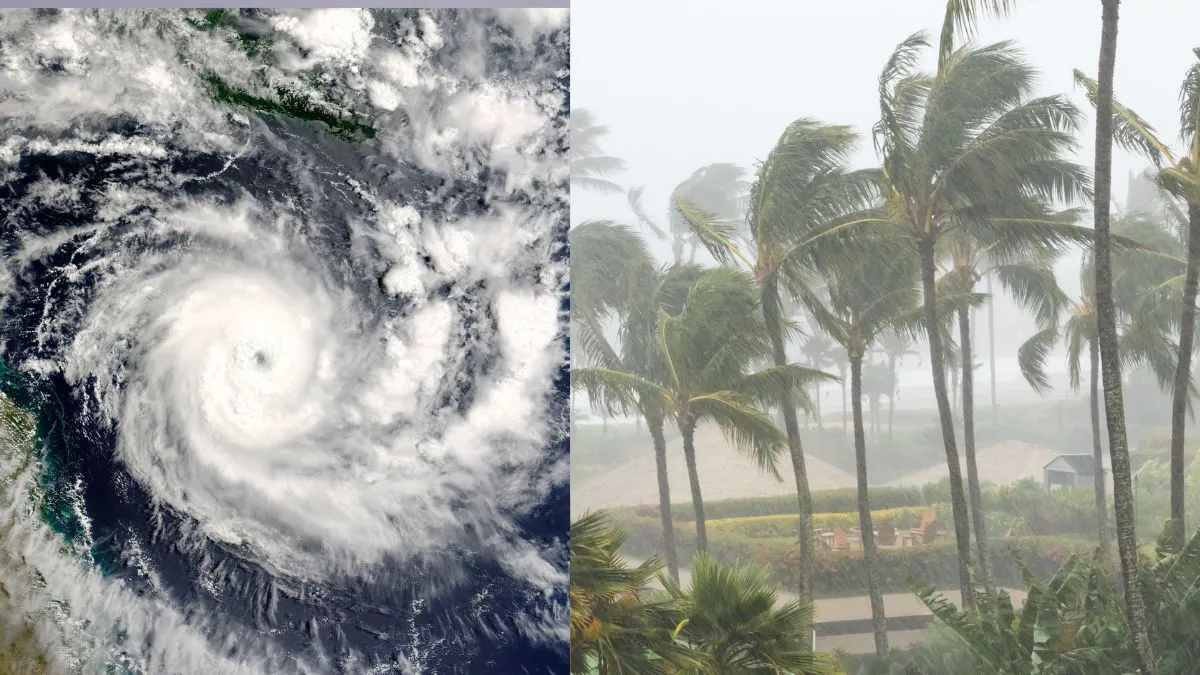- By Aditi Priya Singh
- Wed, 29 Oct 2025 04:33 PM (IST)
- Source:JND
Cyclones in the northern Indian Ocean most often form between April and December, with a notable peak in activity from May to November. Cyclone Montha emerged in late October 2025 as one such powerful storm tracking over the Bay of Bengal. Forming as a low-pressure area around 24 October, it intensified rapidly, with landfall expected along the east Indian coast on 28 October.
The cyclones that form in the Arabian or Indian oceans or the Bay of Bengal strike Asian countries along the coast, including Bangladesh, Sri Lanka, Thailand, the Maldives, Pakistan, and India, almost every year. The World Meteorological Organisation (WMO) has set a rule that states that different nations will give cyclones different names every year for easy communication and international cooperation.
In this article, let’s know everything in detail about Cyclone Montha and why is rule of naming cyclones has been initiated.
What is Cyclone Montha and who named it?
Around October 24, 2025, a low-pressure area formed in the ocean, causing Cyclone Montha, a storm that hit the southeast Bay of Bengal. By October 26th, the system had grown stronger into a depression and subsequently a cyclonic storm.
Montha travelled toward the east Indian coast at a speed of about 12–17 km/h in a north-northwest direction and made landfall on the evening of October 28 in Andhra Pradesh, close to the coastal area between Machilipatnam and Kalingapatnam. Wind speeds of up to 110 km/h were recorded at landfall, with estimates of 90–100 km/h.
Thailand, one of the 13 nations that submit cyclone names for the North Indian Ocean region, came up with the name Montha (sometimes spelt "Montha"). "Montha" means "fragrant flower" or "beautiful flower" in Thai.
ALSO READ: What Is The La Niña Effect? Why India May Face Colder And Longer Winter In 2025 — Know In Detail
Impact and Threats from Cyclone Montha
A red alert has been issued for the coastal states of Andhra Pradesh and neighbouring Odisha.
Low-lying areas were at risk of flooding due to the forecasted heavy to extremely heavy rainfall in the affected zones.
Flights may be grounded, trains may be cancelled, and thousands of people may need to evacuate from areas that are at risk.
One fatality was already reported as Montha made landfall and damaged electricity poles and crops.
Why do Different Countries Name Cyclones Every Year?
To make communication easier and avoid confusion, different countries take turns naming each cyclone every year.
Easy Communication
When a cyclone forms, many people need to talk about it, including emergency services, the media, and weather agencies. It is simpler to recognise and recall a storm when its name is used rather than a number or coordinates. For example, "Low Pressure 2025/10/Bay of Bengal" is more difficult to remember than Cyclone Montha.
International Corporation
Each region's countries establish a cyclone naming committee under the World Meteorological Organisation (WMO). When a new cyclone forms, each nation proposes a list of names, frequently in its own language, and these names are used sequentially.
Examples of Regional Naming Groups
* North Indian Ocean (IMD-led): India, Bangladesh, Myanmar, Pakistan, Sri Lanka, Thailand, Oman, etc.
* Pacific Region: Japan, Philippines, China, etc.
* Atlantic Region: USA, Canada, Mexico, and Caribbean countries.

